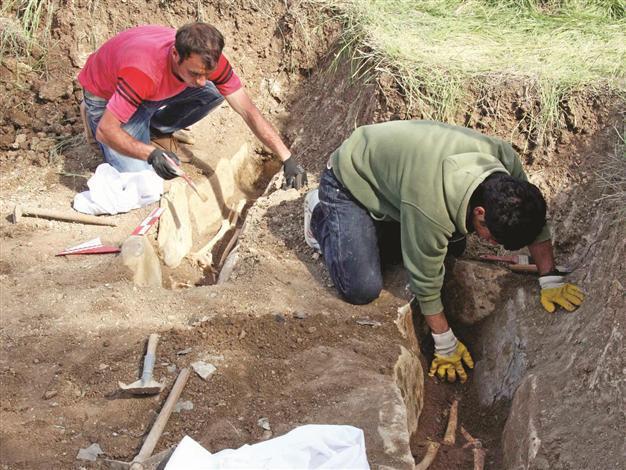Dam causes locals to relocate graves
MARDİN - Anatolia News Agency

Locals in a village that is set to be submerged under water following the construction of the Ilısu dam in the southeastern province of Mardin have begun relocating a nearby cemetery, under the supervision of an imam and an archeologist.
“When the final projects came out, it was announced that 50 percent of the graves would definitely be destroyed. When the matter first came to the [villagers’ attention] it led to an uproar ... They asked if the project could be altered ... [We] consulted religious scholars upon the suggestion to relocate [the graves] and [finally] agreed to it,” said Mehmet Nezir Çelik, the headman of Ilısu village.
Around 25 locals have been participating in the undertaking every day since the effort to remove the graves began in December. Some 1,851 graves have already been lifted out thus far, according to Çelik.
The State Waterworks Authority (DSİ) is in charge of moving the village in the district of Dargeçit up to higher ground, as the settlement is located in the dam area. The cemetery, on the other hand, clashes with the dam’s planned tail-water channel, and will be damaged unless carried away, Çelik said.
“We would not have touched this [area] if it was to be left under the reservoir. We wanted to
move it, however, as otherwise it will be left inside the excavation zone,” he said.
The effort to remove and relocate the cemetery is set to reach completion by May 5, according to Abdulgafur Aksu, the manager of the company that is in charge of carrying the graves, and the headman of the nearby Temelli village.
To move the graves, the villagers place the remnants of the deceased in bag-shaped shrouds while Adnan Demir, the imam of Ilısu village, chants prayers. The remnants are then re-buried in the new graveyard, once more with Imam Demir’s prayers.
“60 percent of these are child graves. We used to bury the young on the lower side and the grown-ups on the upper side. We had not anticipated that so many graves would have come out either. The waters rise once every 30 years as the cemetery is close to River Tigris. We were expecting two story-graves but found four-story graves instead,” Çelik said.
In all likelihood, the cemetery also contains three graves buried according to Christian rites, said archeologist Adem Öncü, adding that he was also involved in the efforts due to the probability of there being archeologically significant artifacts in the area.
 Locals in a village that is set to be submerged under water following the construction of the Ilısu dam in the southeastern province of Mardin have begun relocating a nearby cemetery, under the supervision of an imam and an archeologist.
Locals in a village that is set to be submerged under water following the construction of the Ilısu dam in the southeastern province of Mardin have begun relocating a nearby cemetery, under the supervision of an imam and an archeologist.